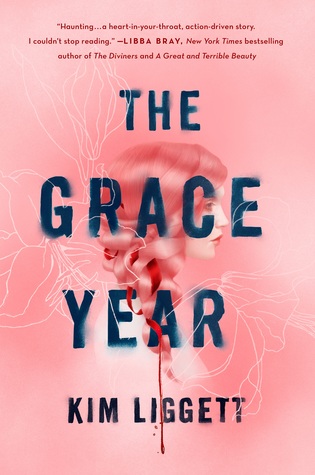
TW: Violence
Lord of the Flies (published in the mid-20th century). However, do be forewarned that this is no G-rated novel. There is blood and violence galore, and I wouldn’t even recommend this to anyone who isn’t at least a high schooler in age and maturity.
But now to get into the story, our main character is Tierney, a 16-year-old girl whose grace year has now approached. In Garner County, there is a belief that girls have the power to lure men and make women go crazy with jealousy when they turn 16. As a result, girls are banished during their 16th year from the main town to release their “magic.” However, this banishment isn’t just an uneventful, calm year during which the girls get to relax and wait until they turn 17; shadowy monsters known as poachers are actively hunting down girls so they can cut them up and sell their parts for vast sums of money to people who use those parts to “preserve their
youth.” (Obviously, this is not really possible but rather an element of the dystopian side of the novel.) At the beginning of the novel, Tierney and a group of 30 or so other girls set off for a journey to a place in the deep forest where all the grace year girls have been sent in years past. Gradually, however, the girls start dying off as tragedy after tragedy strikes and the poachers start hunting them down.
Major Spoilers Ahead!*
A key message in the book is the importance of equality in society. Garner County is depicted as a patriarchal society, and the women are shown suffering numerous inequalities and injustices as a result, such as how they are not permitted to make important town decisions and how a grace year girl’s younger sisters are banished to the dangerous outskirts if their older sister does not return from her banishment alive. Men are also the only ones who have the right, it seems, to choose who they wed, and the girls/women get punished for disagreeing or expressing contrary views (i.e., not being submissive).
On a different note, I noticed a major historical parallel within this book. The fact that girls got banished to release their magic couldn’t help but remind me of the Salem witch trials, during which people accused anyone (mostly women) they didn’t like of being a witch, followed by the accused being ostracized or hung. There’s even a gallows depicted in the story as a punishment for those in Garner County. The citizens of ancient (Greek) Athens voted to ostracize people as well in the past, although the reasons for said ostracism were less associated with magic.
Lastly, there is quite a bit of romance and suspense in this book, not to mention a pretty cool twist towards the end involving Tierney’s father. (I’m going to hide the twist just in case you haven’t read the book yet but overlooked the spoilers warning above 
In conclusion, The Grace Year is a romance book with fantasy blended with realism in a very surprising but fitting fashion. There are cliffhangers at the end of many chapters, which will keep you hooked until the very last page. The ending is also very satisfying and doesn’t leave you grasping at straws, which could be good in some books but would have likely not been effective in this one. However, again, as you could probably tell by reading through this review, this book is not for the faint-hearted and not really appropriate for those who are younger, even tweens. If you enjoy books with blood and gore, romance, a bit of suspense, action, a dystopian element, or any combination of these, check out The Grace Year today!

Review by ~ Andrew
SHARE THIS: